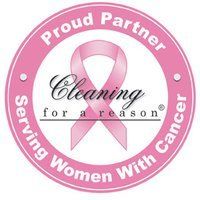How to Treat Stains In Your Home
Stains have many sources; anyone or anything can cause a stain, but the question is: how do you go about getting rid of each kind of stain? One thing that is important when we treat stains is timing. As soon as you know a stain has been made on clothing, curtains, furniture or the carpet, be sure to act immediately. The longer you wait to treat stains, the longer the stain gets to set into the fabric.
We can also categorize a given stain based on what it is made of, and as long as we know that, we will know what exactly to use to treat stains of all kinds.
Wine stains are thought to be some of the worst, but you will be prepared to treat stains like this if you follow this guide.
There is no need to panic when you find a stain. There are many ways to treat stains, and if you follow these tips from the Editors of Consumer Guide (http://home.howstuffworks.com/how-to-remove-stains-and-spots.htm), you will be prepared to treat any stain.
How to Remove Stains and Spots
by the Editors of Consumer Guide
It seems that in every household, there's at least one person who leaves behind a trail of stains and spots like a path of gingerbread crumbs: the home handyman who scatters grease spots from garage to attic, the toddler who expresses independence by painting with peanut butter on the wallpaper; the enthusiastic cook who splatters spaghetti sauce from ceiling to carpet; the new puppy that pointedly demonstrates its need for house-training.
Grass spots on jeans, wine spots on tablecloths, oil stains on the driveway. And what makes it worse is that each stain calls for a different treatment. Ketchup on carpet is not treated in the same way as catsup on concrete, and on top of having to identify both the staining agent and the stained surface, you have to work fast.
The longer most stains set, the harder they are to remove without damage to the stained surface. If you haven't identified the stain correctly, or if you use an improper stain-removing agent or technique, you may make the stain permanent and cause additional damage to the stained object.
THREE TYPES OF STAINS ON FABRICS
Generally, stains can be divided into three types. Each type dictates certain general treatment procedures.
Greasy Stains. Lubricating and cooking oils, butter, machine grease, and similar substances produce greasy stains. Grease spots are sometimes removed from washable fabrics by hand or machine laundering. Pretreating by rubbing a little detergent directly into the spot often helps, as does using a dry-cleaning solvent on the stain. If you are treating an old stain or one that has been ironed, a yellow stain may remain after treatment with a solvent. Bleach is often effective at eliminating this yellow residue.
To remove grease spots from nonwashable fabrics, sponge the stain from center to edge with a stain-removal product. Removal may take several applications, and the spot should be allowed to dry completely before each sponging. Greasy stains may also be removed from nonwashable fabrics by using an absorbent substance such as cornstarch, corn meal, French chalk, or fuller's earth.
Absorbents are dusted on greasy spots to pick up the grease. When the absorbent material begins to look caked, it should be shaken or brushed off. Repeat this procedure until most of the stain is gone. Absorbents are easy to use and will not harm fabrics. However, the other stain removal agents (detergent, dry-cleaning solvent, and bleach) can damage fibers; before using them you should carefully read the care label on the stained item and the label on the product container.
Nongreasy Stains. Nongreasy stains are produced by materials such as tea, coffee, fruit juice, food coloring, and ink. If you have such a stain on a washable fabric, the best treatment is to sponge the stain with cool water as soon as possible. If this doesn't work, try soaking the fabric in cool water. The stain may soak out within half an hour, or you may need to leave the item in the water overnight. If some stain still remains, gently rub liquid detergent into it and rinse with cool water. The last resort is to use bleach, but read the fabric care label first. If the stain is old or has been ironed, it may be impossible to remove it completely. A nongreasy stain on a nonwashable fabric can also be sponged with cool water. Or, you can place a disposable diaper or other absorbent pad beneath the stained area and slowly and carefully flush the stain by pouring water onto it using a mister or eyedropper. You must control the amount of water and the rate at which it is poured to avoid spreading the stain. This may be sufficient to remove some stains, especially if treatment is started promptly. If not, work liquid detergent into the stain as described above and rinse by flushing or sponging with cool water. Sponge the stain with rubbing alcohol after rinsing to remove detergent residue and to speed drying. (Caution: If treating acetate, acrylic, modacrylic, rayon, triacetate, or vinyl, dilute 1 part alcohol with 2 parts water.)
Combination Stains. Coffee with cream, Thousand Island salad dressing, and lipstick are items that cause combination stains; that is, they combine greasy and nongreasy elements. Such stains may require double treatment-first the nongreasy elements of the stain should be treated, then the greasy residue should be removed. The first step in treating such stains is to sponge with cool water as described above, then work liquid detergent into the stain and rinse thoroughly. After the fabric has dried, apply dry-cleaning fluid to any remaining greasy portion of the stain with a sponge. Allow the fabric to dry. Repeat applications of cleaning fluid if necessary. In order to properly treat stains, it is important not only to know what kind of stain you are dealing with, but to also follow some general rules of treating stains: Try your best to identify the components of the stain and the material that was stained. This is the best way to ensure that you treat stains properly and avoid damaging the stained surface further. Be sure to remove as much of the stain sitting on the surface before you actually treat the stain with a given product. You can pre-treat stains by blotting excess liquid or scraping it off if the stain happens to be solid. When you go to treat stains, regardless of materials, avoid the use of heat and handle the stained item carefully, being sure not to fold, rub or wrinkle it. It is important that before you treat stains, that you test the product on a part of the stained material that can be hidden. Even water can stain some materials. When you treat stains, no matter the material, make sure that you work from the center of the stain outward. Lastly, follow the directions on any product you use to treat stains perfectly; you would not want a misread to ruin the effectiveness of a stain remover.
Follow these simple stain removal tips and you will be able to treat stains of all kinds! Just remember: even though it is easy to freak out when you see your white carpet stained with coffee or your silk pillow speckled with wine, remain calm, cool and collected and use your new-found knowledge to treat stains.



